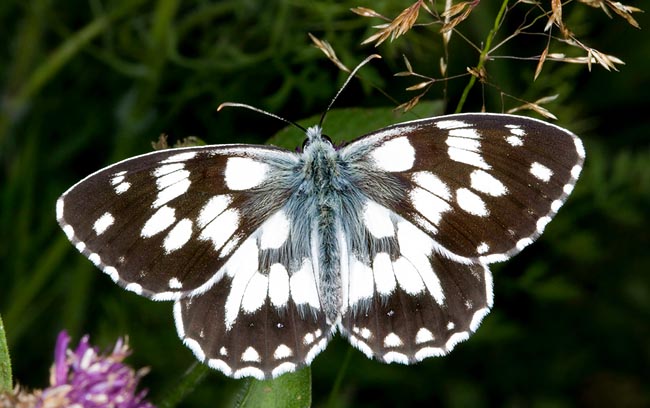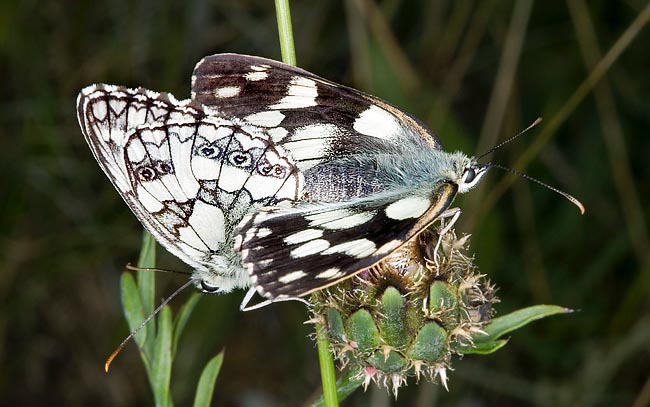Family : Nymphalidae

Text © D. Sc. Giuliano Russini – Biologiste Zoologiste

English translation by Mario Beltramini

With its white and black checkered pattern, Melanargia galathea is an unmistakable butterfly © Giuseppe Mazza
The Marbled white Melanargia galathea Linnaeus, 1758, is a lepidopter afferent to the Rhopalocers (Rhopalocera), to the phylum of Arthropods (Arthropoda), subtype Antennates (Antennata), class Insects (Insecta), subclass of the Neopterans (Neoptera), cohort of the Pterygotes (Pterygota), superorder of the Endopterygotes (Endopterygota = Holometaboles), order Lepidopters (Lepidoptera), suborder of the Heteroneurans (Heteroneura), family Nymphalids (Nymphalidae), subfamily of Satyrines (Satyrinae) and genus Melanargia.
Zoogeography
It is a Palearctic species, spread all over Europe, in North Africa and in western Asia.
Ecology-Habitat
The adult of this species is characterized by a diurnal flight. It colonizes the plains, where the adult of both sexes, in summer, period when they are more active, are attracted by the flowers of Thistle, plants of the genus Carduus, dicotyledonous spermatophytes, and by flowers of plants afferent to the genus Centaurea, belonging to the family of the Asteraceae or Asteraceae.

Mating of Melanargia galathea. It reproduces once a year only © Giuseppe Mazza
Morpho-physiology
Even if its livery may vary, this white and black butterfly, with a checkered pattern, has an unmistakable look.
In some specimens, or forms, the background colour is of a pronounced yellow.
The sexes are similar, though the females tend to be bigger and paler.
In the lower part, the male, at the level of the edges of the hind wings, has some broken lines. The antennae are thin and end club-shaped. Wingspan is 4,5-5,5 cm.
Ethology-Reproductive Biology
It is a “univoltine” species, which means, in biology, that it produces progeny or has a generation per year.
The hibernation takes place at the larval stage and the eclosion happens in June-July. The caterpillar is yellowish-green or pale brown, with dark lines on the back. It develops on Fescues (Festuca), genus of plants belonging to the family of the Poaceae (Graminacee).
Synonyms
Papilio galathea Linnaeus, 1758.
→ For general notions about the Lepidoptera please click here.
→ To appreciate the biodiversity within the BUTTERFLIES please click here.
